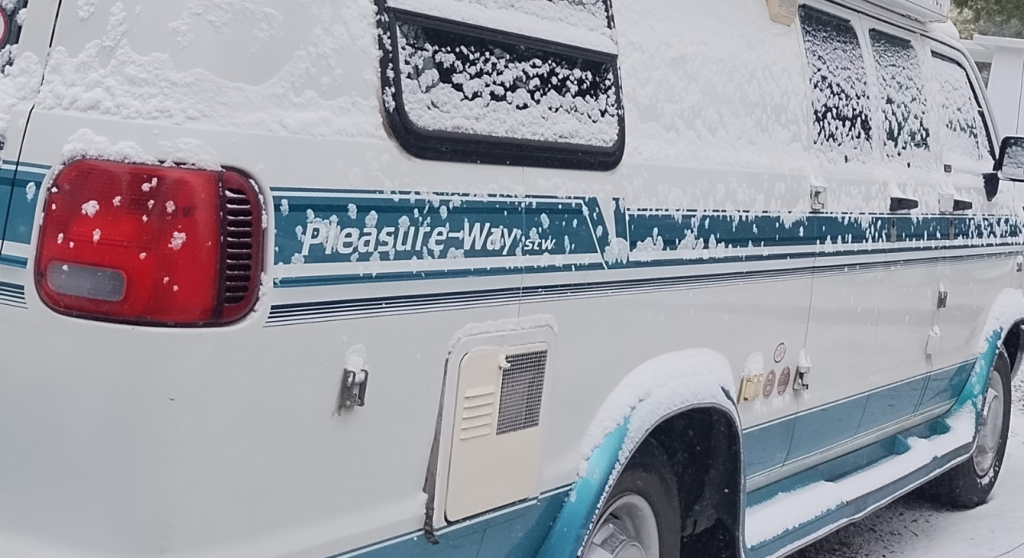Last month I set out an RV Spring Tune-up list – all the things that needed attention and service before heading off this season.
Most of us have experienced tire failure at some point in our lives. When you get a flat, everything suddenly stops – often stranding you in dangerous locations (traffic-wise). Now come the tow trucks and blown travel schedules – anxiety and expensive roadside repairs are all part of the flat tire experience; it’s a major headache. Tires are the main support for the RV, yet as important as they are, they tend to be overlooked. Now is the time to give them the attention they deserve.
So, let’s go through the steps to take – not only annually – but as the camping season progresses and as your RV ages – to keep your tires in the best possible condition.
The first and simplest advice is to remember that air pressure is very important. Keep your tires inflated to the factory-prescribed pressures. Check them regularly and remember that too much can be as dangerous as too little. Weather, temperature and altitude will also affect inflation. Make checking tire pressure part of your regular circle check.
Tire tread condition is also important to watch. Like all of us, tires age – and not that well. They are particularly affected by UV rays, which in most cases are unavoidable. Don’t be fooled into thinking that low mileage on an old tire means it’s still safe; tires dry out and become brittle. This can lead to tread separation and the potential for blowouts.
Rules for basic tire inspection:
- Check tire pressure cold before your trip and during (always cold).
- Check for uneven tread wear (this can tip you off to other potential mechanical problems that are wearing the tires, such as misaligned or worn suspension components)
- Look for cracks inside the treads and on the sidewalls.
- Hand-check lugs for tightness and wear every time you check the air pressure.
- Touch the centre cap when stopped during travel, looking for heat. This is often the first sign of trouble as a wheel bearing fails.
So, while the most valuable tire evaluation comes from visual checks, much more can be learned about a tire from the information it carries on its sidewalls.
Example: Size Designation P185/75R14
- The letter ‘P’ or no prefix identifies a tire intended for passenger cars.
- A T prefix is for “temporary use” as a spare only.
- “LT” stands for Light Truck.
- 185 – Cross-section width: (in millimetres).
- 75 – Aspect Ratio: The ratio of the tire height to the tire width, expressed as a percentage.
- Construction Type: R = Radial; B = Bias Belted; D = Diagonal.
- 14 – Rim Diameter (in inches) that the tire must be mounted on.
This information will assure you that you are running on buying the right tire for your RV. But there is another sidewall code that is as or even more important. That is the DOT Code that reveals how old a tire is.
Example: DOT Code CCTU9JW4518
All tires carry a Transport Canada approval code identifying the manufacturer, plant, tire make and model, and production date. All you need to know in this example comes from the last three or four digits. In this example, the tire was built during the 45th week of the 18th year (2018). Please note – if you look for this code, sometimes it’s on the tire’s inside wall, meaning you’ll have to get under the trailer to find it.
The DOT code is particularly useful when evaluating the fitness of trailer tires. Often rubber appears to be in good shape because of little use, but remember, rubber does age and become brittle. The older a tire is, the more likely it is to have cracks between the treads and sidewalls. But you can’t count on these telltale signs – sometimes, they don’t exist.
Years ago, after the Explorer tire problems, Ford Motor Co. started about tire failures. Ford officials said the move came in response to a growing body of research that suggested tires deteriorate as they age and can experience tread separations and other failures, even if they looked robust. A spokesperson at the time was quoted in a Detroit News story saying, “Tires degrade over time, even when they are not being used.”
At the time, Ford suggested: “It is recommended that tires generally be replaced after six years of normal service. The heat caused by hot climates or frequent high loading conditions can accelerate the ageing process.”
This must be considered good advice; however, the DOT Code also has another important use. When you buy new tires, you can and should check when your tires were made. I bring this up because buying new tires is no guarantee that they haven’t been sitting in a warehouse somewhere for years before they were sold. Imagine buying tires today and discovering they were made two, three, or even five years ago.
With this knowledge, you can check build dates and choose not to buy out-of-date tires.




